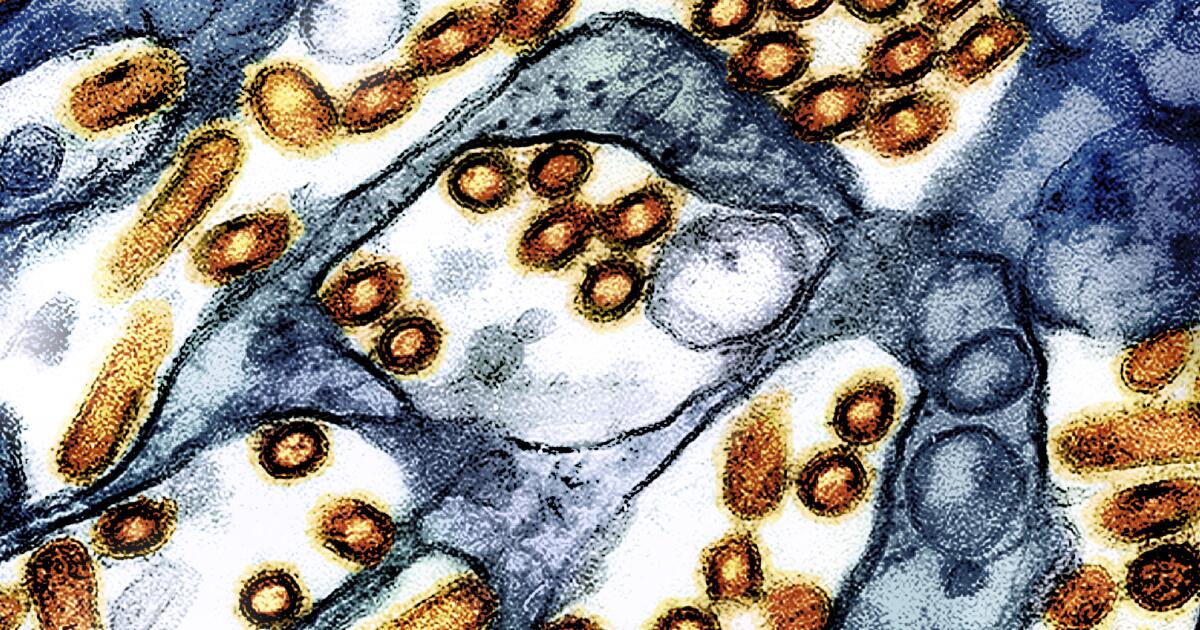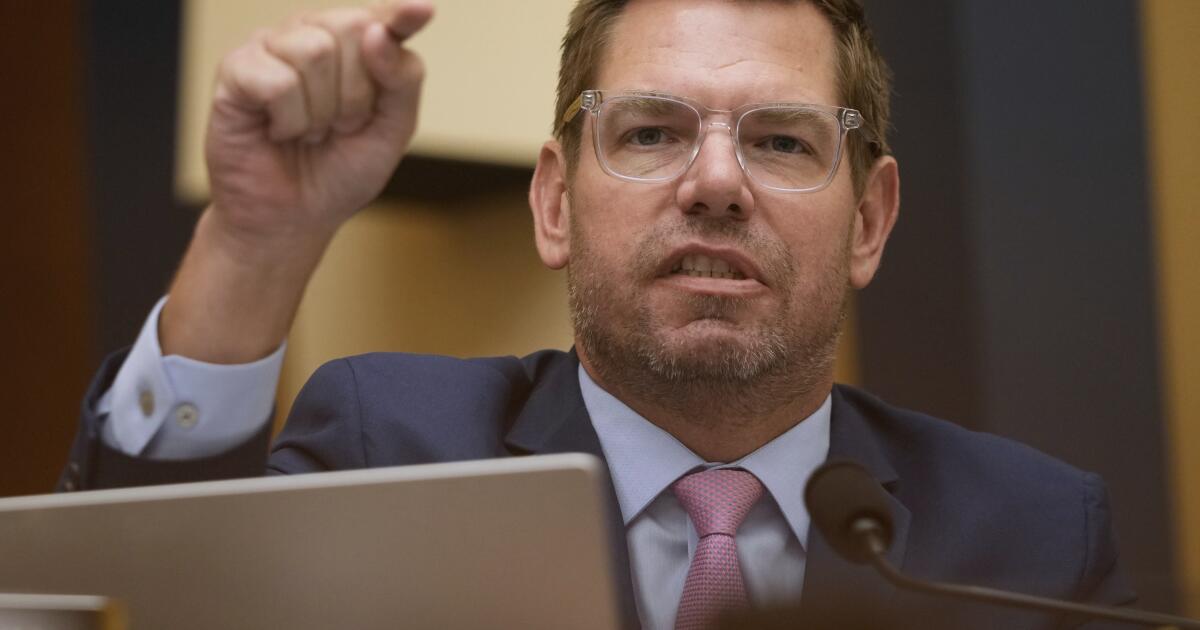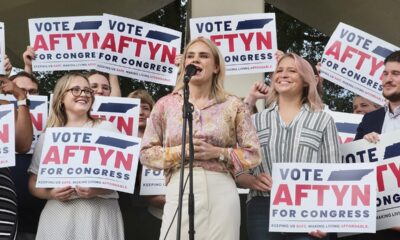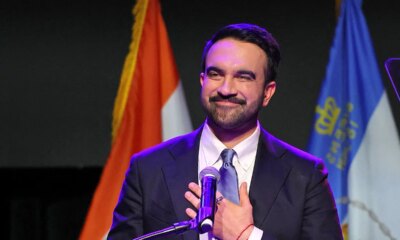World
For many Chinese, there are ‘more important things’ than Taiwan unification

“It is difficult to imagine that this used to be a warzone,” 23-year-old *Shao Hongtian told Al Jazeera as he wandered along a beach near the city of Xiamen on China’s southeast coast.
Halting by the water’s edge where gentle waves lapped against the sand, Shao gestured beyond the shallows towards the sea and the Kinmen archipelago – now peaceful, but in the 1940s and 1950s, a battleground.
The communists won the Chinese Civil War in 1949, and the nationalists of the Kuomintang (KMT) fled Beijing for the island of Taiwan. It was on Kinmen, the main island of the archipelago of the same name, less than 10km (6.2 miles) from the coast of China, that the nationalists repulsed repeated communist invasion attempts, but not before the fighting had wreaked havoc on both Xiamen and Kinmen.
Kinmen and its outlying islets – some of which lie even closer to the Chinese coast – have been a part of Taiwan’s territory ever since.
Chinese citizens like Shao were once able to get tourist visas to visit the islands, but that ended with the pandemic.
“Kinmen, China and Taiwan are all part of the same nation, so it should be possible to visit, and I hope I can visit one day,” Shao said over a video connection – his eyes fixed on Kinmen.
Like Shao, Chinese President Xi Jinping and the ruling Chinese Communist Party (CCP) claim that Taiwan and its territory are part of China.
Xi said in his New Year’s address that China’s unification with democratic Taiwan was an “historical inevitability“, and China has not ruled out the use of force to achieve unification. Last year Xi called on China’s armed forces to strengthen their combat readiness.
In recent years the Chinese military has increased its pressure on Taiwan with almost daily airborne and maritime incursions close to Taiwan’s air and sea space. At times of particular tension, such as during the visit of former House Speaker Nancy Pelosi to Taipei, such manoeuvres have been accompanied by sabre-rattling rhetoric and large-scale military drills.
Capsized boats, recriminations
Recently, tensions have been rising near Kinmen as well.
In February, two Chinese fishermen were killed when their speedboat capsized as they attempted to flee the Taiwanese coastguard when they were discovered fishing “within prohibited waters” about one nautical mile (1.8km) from the Kinmen archipelago.
Since then, the Chinese coastguard has stepped up its activities around Kinmen.
Zhu Fenglian, a spokesperson for the Chinese government’s Taiwan Affairs Office, said the February incident was “vicious” and stressed the waters were “traditional” fishing grounds for fishermen in China and Taiwan. There were no off-limits waters around Kinmen, she added.
A second capsize was reported on Thursday, and on this occasion China asked for help from the Taiwan coastguard.
Standing on the beach looking out towards Kinmen, Shao says hostilities are not the way to bring China and Taiwan together.
“I want unification to happen peacefully,” he said.
If that is not possible, he would prefer things to remain as they are.
He knows that many of his friends feel the same way. According to Shao, if they go to Kinmen and Taiwan, it should be as visitors, not as fighters.
“The Taiwanese haven’t done anything bad to us, so why should we go there to fight them?” he said, convinced that any war between China and Taiwan would result in significant casualties on both sides. “Unification with Taiwan is not worth a war.”
No appetite for war
A study published by the University of California San Diego’s 21st Century China Center last year suggests that Shao and his friends are not alone in opposing a war over Taiwan.
The study explored Chinese public support for different policy steps regarding unification with Taiwan and found that launching a full-scale war to achieve unification was viewed as unacceptable by a third of the Chinese respondents.
Only one percent rejected all other options but war, challenging the Chinese government’s assertion that the Chinese people were willing to “go to any length and pay any price” to achieve unification.
Mia Wei, a 26-year-old marketing specialist from Shanghai is not surprised by such results.
“Ordinary Chinese people are not pushing the government to get unification,” she told Al Jazeera.
“It is the government that pushes people to believe that there must be unification.”
At the same time, support for a unification war turned out to be close to the same level found in similar studies from earlier years, indicating that despite the growing tension in the Taiwan Strait and renewed talk about taking control of Taiwan, there has not been a corresponding increase in support for more forceful measures.
Wei believes that Chinese like herself are more concerned with developments inside their country.
“First there was COVID, then the economy got bad and then the housing market got even worse,” she said. “I think Chinese people have their minds on more important things than unification with Taiwan.”
According to Associate Professor Yao-Yuan Yeh who teaches Chinese Studies at the University of St Thomas in the United States, there is currently little reason for Chinese people to be more supportive of conflict with Taiwan.
US President Joe Biden has on several occasions said the US will defend Taiwan in the event of a Chinese invasion. At the same time, the US has been strengthening its military ties with countries such as Japan and the Philippines – Taiwan’s immediate neighbours to the north and the south.
“There is no guarantee of a quick victory in a war over Taiwan,” Yeh told Al Jazeera.
“Also, many people in China have business partners, friends and family in Taiwan, and therefore don’t want to see any harm come to the island and its people.”
The study also showed that young Chinese were more averse towards forceful policy measures than earlier generations.
“Young people are usually among the first to be sent to the battlefield so naturally they are more opposed to war,” Yeh said.
Shao from Xiamen thinks that any hope of victory in a war over Taiwan and its partners will require the mobilisation of a lot of young people like him.
“And I think many young people in China [will] refuse to die in an attack on Taiwan.”
Not an issue for debate
Regardless of what Chinese people might think, unifying Taiwan with the mainland will remain a cornerstone of the CCP’s narrative, according to Eric Chan who is a senior fellow at the Global Taiwan Institute in Washington, DC.
“Unification is not a topic that is up for any sort of debate with the general public,” he told Al Jazeera.
Although the Chinese leadership often claims that China is a democratic country where the party is guided by the will of the Chinese people, there are no regular national elections or free media while online discourse is restricted and regularly censored. Speaking out against the CCP can also result in criminal convictions.
Since Xi became president in 2012, crackdowns on civil liberties have intensified, and Xi has centralised power around himself to a degree unprecedented since the rule of Mao Zedong – the man who led the communists to victory against the nationalists and became communist China’s first leader.
During Mao’s rule, reforms and purges of Chinese society led to the deaths of millions of Chinese people, while upwards of 400,000 Chinese soldiers died as a result of his decision to enter the 1950-1953 Korean War on North Korea’s side.
But according to Chan, the days when a Chinese leader could expend tens of thousands of lives in such a manner are over.
Recent government actions that exacted a heavy toll on citizens led to public pushback, and Xi did not appear immune.
During the COVID pandemic, Xi ardently defended the country’s zero-COVID policy even though its mass testing and strict lockdowns had dire socioeconomic consequences. The government eventually abandoned the policy as the economy sank, and people took to the streets across China’s major cities demanding an end to the lockdowns, even calling for Xi to step down.
As for war, the circumstances are also different. Unlike, for example, the Sino-Indian War of 1962 and the Sino-Vietnamese War of 1979, a battle for Taiwan would be existential for the communist party and Xi, according to Chan.
“The party (CCP) would not have been threatened by a loss or high casualties in those wars,” he said.
Today, Xi would need to assume that those types of losses would be unacceptable to the Chinese people, he added.
Public outrage over a long unification war that might even end in a Chinese defeat could, in Chan’s view, endanger the party’s rule.
Mindful of the mood of the Chinese people, Chan sees the CCP instead continuing to engage in low-cost grey zone operations against Taiwan while developing a Chinese military that would be able to score a swift victory.
For Shao, however, any attempt to settle the issue through conflict would be a disaster.
“I don’t think it will end well for anyone – not for those that have to fight it and not for the government that starts it,” he said.
*Shao’s name has been changed to respect his wish for anonymity given the sensitivity of the topic.

World
Consumers should do their research before giving in to Travel Tuesday temptation
NEW YORK (AP) — Chain stores have Black Friday. Online marketplaces have Cyber Monday. For local businesses, it’s Small Business Saturday.
In the last 20 years, more segments of the retail industry have vied for their own piece of the holiday shopping season. The travel trade has firmly joined the trend with another post-Thanksgiving sales push: Travel Tuesday.
On the same day as the nonprofit world’s Giving Tuesday, airlines, hotels, cruise ship companies, travel booking platforms and tour operators get in on the annual spirit to spend by promoting one-day deals. Consumer advocates say there are legitimate savings to be had but also chances to be misled by marketing that conveys a false sense of urgency.
“People see ‘40 percent off’ and assume it’s a once-in-a-lifetime steal, without recognizing that the underlying price may have been inflated or that the same itinerary was cheaper last month.” Sally French, a travel expert at personal finance site NerdWallet, said.
She and other seasoned travelers advised consumers who want to see if they can save money by booking trips on Travel Tuesday to do research in advance and to pay especially close pay to the fine print attached to offers.
People hoping to score last-minute deals for Christmas or New Year’s should double-check for blackout dates or other restrictions, recommended Lindsay Schwimer, a consumer expert for the online travel site Hopper.
This article is part of AP’s Be Well coverage, focusing on wellness, fitness, diet and mental health. Read more Be Well.
It’s also wise to to keep an eye out for nonrefundable fares, resort fees, double occupancy requirements or upgrade conditions that may be hidden within advertised discounts, according to French.
Shoppers should be wary of travel packages with extra transportation options or add-on offers, French said. Instead of lowering fares or room rates, some companies use statement credits, extra points, included amenities and bundled extras as a way to tempt potential customers, she said.
“Many travel brands want to keep sticker prices high to maintain an aura of luxury, but they still need to fill planes, ships and hotel rooms,” French said. “Add-on perks are their workaround.”
Consumers who are prepared rather than impulsive and on the lookout for the up-sell are in a much better position to identify authentic bargains, consumer experts stressed. Knowing what a specific trip would typically cost and comparison shopping can help expose offers based on inflated underlying costs and whether the same itinerary might have been cheaper at other times, they said.
“Compare prices, check your calendar and make sure the trip you’re booking is something you genuinely want, not something you bought because a countdown timer pressured you,” French said. “What gets glossed over is that the best deal might be not booking anything at all if it doesn’t align with your plans.”
Travel Tuesday came about based on existing industry trends. In 2017, Hopper analyzed historical pricing data and found that in each of the nine previous years, the biggest day for post-Thanksgiving travel discounts was the day after Cyber Monday.
The site named the day Travel Tuesday. The number of offers within that time-targeted window and the number of travelers looking for them has since expanded.
“Nearly three times as many trips were planned on Travel Tuesday last year compared to Black Friday,” Hopper’s Schwimer said. “We continue to see growth in the day, year over year, as more travel brands and categories offer deals.”
The event’s origin story is in with the National Retail Federation coined Cyber Monday in 2005 as a response to the emerging e-commerce era. American Express came up with Small Business Saturday in 2010 to direct buyers and their dollars to smaller retailers, credit card fees and all.
A report by the consulting firm McKinsey & Company last year noted that November and December tend to be slow months for travel bookings, making Travel Tuesday a “marketing moment” that could help boost revenue.
Hotel, cruise and and airline bookings by U.S. travelers increased significantly on Travel Tuesday 2023 compared with the two weeks before and after the day, the report’s authors wrote, citing data provided by the travel marketing platform Sojern.
While Travel Tuesday so far has been mostly confined to the United States and Canada, “European travel companies can anticipate the possibility that Travel Tuesday will become a growing phenomenon in their region, given that other shopping days such as Black Friday and Cyber Monday have spread beyond North America,” the report stated.
Vivek Pandya, lead insights analyst for Adobe Analytics, which tracks online spending, said consumers have more tools than ever this holiday season to help them determine if deals hold up to scrutiny.
“Social journeys, influencers providing promo codes and values, and generative AI platforms taking all that in – the prices, the social conversation, the reviews – and giving guidance to the consumer, that’s a very different, dynamic kind of journey consumers are taking than they have in previous seasons,” Pandya said.
Both he and French emphasized that prices rise and fall based on multiple factors, and that the winter holidays are not the only major promotional period of the year.
“We now have dozens of consumer spending ‘holidays,’” French said. “Amazon alone keeps adding new versions of Prime Day. So if you don’t buy on Travel Tuesday, you haven’t missed your moment.”
——
The Associated Press receives support from the Charles Schwab Foundation for educational and explanatory reporting to improve financial literacy. The independent foundation is separate from Charles Schwab and Co. Inc. The AP is solely responsible for its journalism.
World
Israel releases body-cam video of deadly Syria raid targeting Muslim Brotherhood-affiliated terrorists

IDF battles terrorists in Syria raid
Body-cam video shows face-to-face firefight between Israeli forces and terrorists in Beit Jann raid as IDF troops capture terror suspect. (Video: IDF Spokesman’s Unit.)
NEWYou can now listen to Fox News articles!
The IDF released body-camera footage Friday from a rare face-to-face gun battle in southern Syria, where troops from the 55th Brigade were fired on while arresting members of al-Jama’a al-Islamiyya, a Sunni terrorist group Israel identifies as part of the wider Muslim Brotherhood network.
The cross-border gun battle comes as the Trump administration moves to target Brotherhood affiliates and tensions spike between Netanyahu and Syria’s interim president.
The overnight operation took place in the Beit Jann area, roughly 10 kilometers inside Syria, under the 210th Division. According to the IDF, troops entered the area to detain suspects involved in planting IEDs and planning future attacks against Israel, including potential rocket fire. Two suspects were arrested before an exchange of fire erupted.
Six IDF soldiers were wounded, including three in serious condition. Several terrorists were killed, the IDF said, and the suspects were transferred to Israel for interrogation.
TRUMP MOVES AGAINST MUSLIM BROTHERHOOD AS ISLAMIST GROUP SPREADS IN WEST
IDF troops move through the Beit Jann area in southern Syria during the overnight operation to apprehend members of Al-Jama’a al-Islamiyya, the Muslim Brotherhood-linked militant group. (IDF) (IDF)
Al-Jama’a al-Islamiyya, founded as the Lebanese branch of the Muslim Brotherhood, has cooperated with Hamas and Hezbollah, maintaining infrastructure in southern Lebanon and along the Syria-Lebanon border. The IDF says it has struck the organization’s sites in Syria and Lebanon repeatedly during the current war.
Channel 12 political correspondent Amit Segal noted Friday that the incident marks the first time since December 2024 — when Israeli forces took control of the Syrian side of Mount Hermon — that Israeli troops were wounded in a Syrian firefight.
Segal wrote: “Could Syria become the IDF’s new Lebanon? … With six soldiers wounded overnight, the big question is whether this is a one-off event, or if it signals the beginning of a long, uncomfortable Israeli presence in Syria.”
Tensions between Syrian interim president Ahmed al-Sharaa and Israeli Prime Minister Benjamin Netanyahu have intensified since Sharaa’s unprecedented visit to Washington earlier this month. Sharaa met President Donald Trump at the White House for discussions on sanctions relief and counterterrorism coordination, making him the first Syrian leader to visit Washington since the Syrian war began.
IDF STRIKES HAMAS ‘TERRORIST TARGETS’ ACROSS GAZA FOLLOWING REPORTED CEASEFIRE VIOLATION
Israeli forces secure the area around Beit Jann after detaining two suspects and coming under fire in one of the most serious clashes on the Syrian front this year. (IDF)
Netanyahu publicly criticized the visit the same day, saying Sharaa “returned inflated with a sense of international legitimacy,” and warning that any U.S.-Syria discussions must “not come at Israel’s expense.”
Additional reporting in the Jerusalem Post and Channel 12 noted that security arrangements affecting Israel’s northern front were discussed in broad terms between U.S. and Syrian officials, though no agreements were reached, and Washington stressed that consultations with Israel were ongoing.
Friday’s clash came the same week the Trump administration launched a sweeping effort to designate Muslim Brotherhood affiliates as terrorist organizations. The White House directive instructs federal agencies to evaluate and sanction Brotherhood entities in countries including Egypt, Jordan and Lebanon, citing global financial, political and operational ties among affiliates.
ISRAEL’S STRIKE IN QATAR TRIGGERS RARE US REBUKE, TESTS TRUMP’S GULF DIPLOMACY
IDF armored vehicles maneuver in the Beit Jann area of southern Syria during the overnight counterterrorism operation against Al-Jama’a al-Islamiyya. (IDF)
The White House statement said the Brotherhood “fuels terrorism and destabilization campaigns against U.S. interests and allies.”
Sen. Ted Cruz, R-Texas, praised the move on his podcast Verdict, telling co-host Ben Ferguson that the designation marks the culmination of a decade of legislative efforts. Cruz said “This is literally 10 years of hard work, and it will make America safer because the Muslim Brotherhood is funding terrorists that want to murder you and want to murder me.”
He noted that many U.S. allies in the Middle East — including Egypt, Jordan, Saudi Arabia, Bahrain and the UAE — have already outlawed the organization, telling listeners: “They really want the United States to do what President Trump did this week.”
CLICK HERE TO DOWNLOAD THE FOX NEWS APP
As Washington intensifies pressure on Brotherhood-linked movements, Israel is increasingly confronting Brotherhood-affiliated armed groups across the northern arena — from Hamas in Gaza to al-Jama’a al-Islamiyya in Syria and Lebanon.
With Beit Jann emerging as a focal point for cross-border operations, and American policy tightening, analysts say the regional confrontations involving Brotherhood-connected groups may be entering a new phase.
World
Hong Kong mourns victims of blaze as search for remains continues

At least 128 people died and 200 remain missing after the towers housing 4,600 people were engulfed by flames.
Published On 29 Nov 2025
People in Hong Kong are mourning the deaths of at least 128 people who died in the region’s largest blaze in decades in an eight-apartment residential complex.
The flags outside the central government offices were lowered to half-mast on Saturday as Hong Kong leader John Lee, other officials and civil servants, all dressed in black, gathered to pay their respects to those lost at the Wang Fuk Court estate since the fire on Wednesday.
list of 3 itemsend of listRecommended Stories
Condolence books have been set up at 18 points around the former British colony for the public to pay their respects, officials said.
At the site of the residential complex, families and mourners gathered to lay flowers.
By Friday, only 39 of the victims had been identified, leaving families with the morbid task of looking at the photographs of the deceased taken by rescue workers.
The number of victims could still dramatically rise as some 200 people remain missing, with authorities declaring the end of the search for survivors on Friday.
But identification work and search for remains continues, as Lee said the government is setting up a fund with 300 million Hong Kong dollars ($39m) in capital to help the residents.
The local community is also pitching in, with hundreds of volunteers mobilising to help the victims, including by distributing food and other essential items. Some of China’s biggest companies have pledged donations as well.
The Wang Fuk Court fire marks Hong Kong’s deadliest since 1948, when 176 people died in a warehouse blaze.
At least 11 people have been arrested in connection with the tragedy, according to local authorities.
They include two directors and an engineering consultant of the firm identified by the government as doing maintenance on the towers for more than a year, who are accused of manslaughter for using unsafe materials.
The towers, located in the northern district of Tai Po, were undergoing renovations, with the highly flammable bamboo scaffolding and green mesh used to cover the building believed to be a major facilitator of the quick spread of the blaze.
Most of the victims were found in two towers in the complex, with seven of the eight towers suffering extensive damage, including from flammable foam boards used by the maintenance company to seal and protect windows.
The deadly incident has prompted comparisons with the blaze at the Grenfell Tower in London that killed 72 people in 2017, with the fire blamed on flammable cladding on the tower’s exterior, as well as on failings by the government and the construction industry.
“Our hearts go out to all those affected by the horrific fire in Hong Kong,” the Grenfell United survivors’ group said in a short statement on social media.
“To the families, friends and communities, we stand with you. You are not alone.”
-

 Science7 days ago
Science7 days agoWashington state resident dies of new H5N5 form of bird flu
-

 World1 week ago
World1 week agoZelenskiy meets Turkish president as word emerges of new US peace push
-

 Business4 days ago
Business4 days agoStruggling Six Flags names new CEO. What does that mean for Knott’s and Magic Mountain?
-

 New York1 week ago
New York1 week agoDriver Who Killed Mother and Daughters Sentenced to 3 to 9 Years
-

 World1 week ago
World1 week agoUnclear numbers: What we know about Italian military aid to Ukraine
-

 Politics2 days ago
Politics2 days agoRep. Swalwell’s suit alleges abuse of power, adds to scrutiny of Trump official’s mortgage probes
-

 Politics1 week ago
Politics1 week agoMamdani keeps Jessica Tisch as NYPD commissioner
-

 Science1 week ago
Science1 week agoRising Home Insurance Premiums Are Eating Into Home Values in Disaster-Prone Areas



















